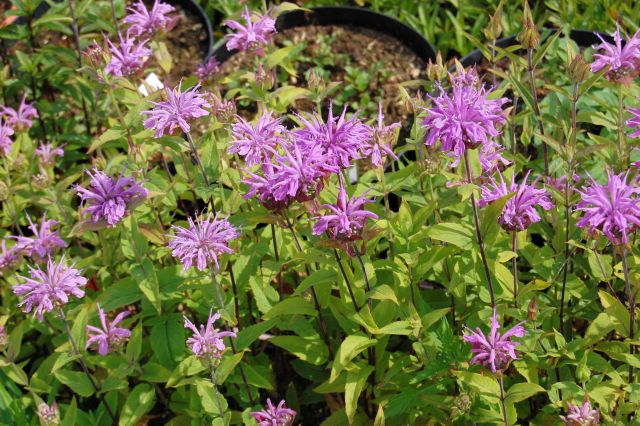
They gave way to many cultivars and hybrids, which come in a wide array of colors including brilliant shades of red, violet, purple, pink, and white. Both species have tall, sturdy square stems and a spreading habit.

Monarda didyma produces scarlet-red flowers collared by red-tinged bracts, whereas Monarda fistulosa features light lavender to pinkish-white flowers surrounded by bracts that are often tinted with pink. Members of the mint family (Lamiaceae), Monarda didyma (Bee Balm), and Monarda fistulosa (Wild Bergamot) are the most commonly cultivated of the 16 species native to North America.Mature plants, 3-4 years old, can be divided to make new plants.

Bee Balm does not usually flower until the second year. Space monarda plants 18 to 24 inches apart in organically rich soil with a pH of 6.0 to 6.7 that drains easily. Bee balm tolerates partial sun, but youll get fewer flowers.
#MONARDA FISTULOSA FULL#
Plant monarda in spring or fall in a spot that gets full sun.

More leaves may be harvested each year as plant size increases. Growing bee balm plants isnt hard, if you keep their soil evenly moist. Exuberant, they spice up summer borders and it is difficult to resist their floral charm, despite the susceptibility of some varieties to powdery mildew. HARVEST: Starting the first year, leaves may be harvested. The blooms consist of asymmetrical, two-lipped tubular flowers borne in dense, globular terminal heads, which rest upon a whorl of decorative bracts. One of the showiest summer-blooming perennials, Monarda (Bee Balm) has very distinctive, brightly colored flower-heads that create captivating border displays and provide a great impact when used in mass plantings.


 0 kommentar(er)
0 kommentar(er)
